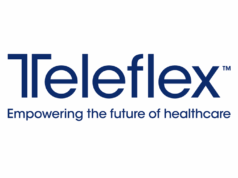Aptus Endosystems, a medical device company developing advanced technology for endovascular aneurysm repair (EVAR), has announced the start of ANCHOR, a global, multicentre, prospective post-market registry, which will evaluate the use of the HeliFX Aortic Securement System in the treatment of abdominal aortic aneurysms.
The proprietary helical anchor technology, also called an “EndoAnchor”, enables independent endograft fixation to the aorta, and mimics the suturing performed during open surgical repair of abdominal aortic aneurysms.
ANCHOR (Aneurysm treatment using the HeliFX Aortic Securement System global registry) will collect data on the treatment of abdominal aortic aneurysms and provide the clinical knowledge for optimal use of the HeliFX system in the setting of clinical practice. The registry will consist of two arms, ‘Primary’ and ‘Revision’, which support the indications for use of the HeliFX system with commercially available endografts manufactured by Cook Medical, Gore, and Medtronic. The ‘Primary’ group will characterise the HeliFX system placed at the time of endograft implantation, for the prevention of graft migration and type I endoleak. The ‘Revision’ group will characterise the HeliFX system in patients with previously implanted endografts that require treatment for graft migration and type I endoleaks. As many as 75 sites across the United States and Europe may enrol up to 1,000 patients in each arm of the registry. Patient data will be followed for up to five years.
“The ANCHOR registry provides a great opportunity for physicians to evaluate the novel HeliFX Aortic Securement System which has the potential to improve the long-term durability of EVAR in clinical practice,” said William Jordan, chief, Section of Vascular Surgery at the University of Alabama Hospital, Birmingham, USA, and principal investigator for ANCHOR in the United States.
“The ANCHOR registry will prioritise the incremental value of the use of EndoAnchors in de novo EVAR patients with challenging proximal aortic neck anatomies that can lead to migration and type I endoleaks,” said Jean Paul de Vries, head of the Department of Vascular Surgery at St Antonius Hospital, Nieuwegein, The Netherlands, and principal investigator for ANCHOR in Europe. “Moreover, EndoAnchors have been shown to be safe and feasible in revision surgery post-EVAR to solve inadequate proximal fixation and seal of endografts. The ANCHOR registry will provide us with valuable longer-term data concerning improvement of endograft adaptation to the aortic wall.”
“The company is privileged to be working with many leading EVAR investigators in the USA and Europe on this important, first-of-its type clinical programme focused on EndoAnchors as an adjunct to leading commercially available endografts,” said Jeff Elkins, president and CEO of Aptus. “The ANCHOR registry represents Aptus’ commitment to responsibly advancing clinical research and data dissemination for this exciting new technology. Proactively gathering acute and long-term post-market data from the earliest stages of commercial release will help to maximise the clinical understanding of the varied HeliFX applications, capabilities, and potential clinical and economic benefits.”












